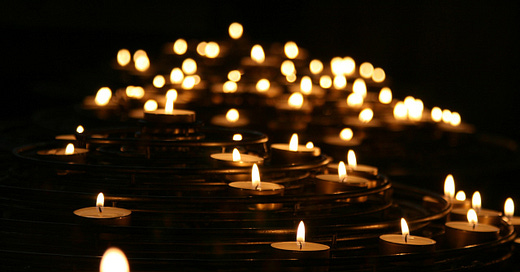I’m reading The Dance of the Dissident Daughter by Sue Monk Kid and finding much resonance on the pages, though my own experience of church is a very different one to the US Southern Baptist Church that she grew up in. Her journey from ‘Good Christian Girl’ [my term, Kidd uses ‘Gracious Church Ladies’ which was an actual sub-group in her church that she was initiated into] into the wilds of freeing herself from the patriarchal chains is one that sounds a clanging bell deep in my soul.
There is so much about being a woman that is challenging, and I think much of it is amplified by church power structures. Let me be clear, I am currently part of a church community whose commitment to seeing women lead in all spaces is absolutely solid, if this were not the case I would not be there. But I am acutely aware of the obsession of the church, as a whole currently and historically, to use its power and influence to keep women ‘in their place’. In fact, Kidd’s book begins with a story which takes my breath away initially – two men who see her 14 year old daughter kneeling down in the shop where she was stacking the shelves, one of them jokes to the other ‘That’s what I like to see, a woman on her knees’ (or words to that effect). I realise as Kidd unpacks her response that I am reading this post the #MeToo movement and have assumed a sexual tone to the comments, whereas Kidd wrote this in 1993 and does not seem to have ascribed any sexualisation to the comment. She did stand up for her daughter in the moment, which I was relieved to read, but she also acknowledges that this was perhaps the first time she had called out misogyny. The church is an expert at putting women in their place, there are countless stories of abuse of power alongside many more stories of regular old misogynistic leaders and congregants who simply will not accept that women are equally able to do all things that the men do.
We must dismantle this system wherever we find it, I can put together some resources to read and consider at the end.
Along with much of the world, I watched The Matrix in 1999, it stirred something in me which at the time I didn’t fully recognise. But the idea of being ‘plugged in’ to a system that could be broken free of, that those who were ‘free’ were living challenging lives but would still not choose (for the most part) to go back, that once you saw the reality of life there was no going back, all these things have come back to me in the 25 years since then.
[side note: a quick google of the Matrix brings you up against all manner of conspiracy theorists who claim the film as their own ‘awakening’ - I do not identify with any of these. I guess good story telling appeals to many!]
One other theme of The Matrix is the community amongst those who are on the outside, there is solidarity and recognition of the need for togetherness. Those of us who are fighting our way through patriarchy and misogyny need each other. We need to know there are others who see it, and others who are fighting, whether in a literal sense or more metaphorically. We need to make space for the activists, for the deep thinkers and feelers, for the creative and the builders of community. Not everyone approaches this in the exact same way, but there are commonalities we can recognise and I am thankful for those in my life who saw that I was struggling and have come alongside me to show me the way through. I have learned about standing up for myself and others around me (still learning of course), I have borrowed courage and strength, I have experienced the power of ‘Sister, I am with you’.
One of the stories that Sue Monk Kidd recounts is a visit to the caves in Skotino, Crete. There she and group of other women descended four layers of cave network with lit candles. When they reach their destination in the cave, they blow out their candles. Kidd recalls it becoming a space of unravelling, no boundaries, no path to tread, just an awareness of the warmth of another human next to you. Another account of this ritual I’ve read mentions a chant of “light and darkness” for the period of time in the darkest of dark places. As we walk a path that the world would rather was left untrodden, we may feel as if we are unravelling and maybe that’s what is needed. It’s disorientating and discombobulating but, in the end, the most essential thing is to know that we are not alone. After the period of darkness in the caves, the candles are relit by passing the flame from one to another. It is important that we use our own light to encourage others on this journey, but also that we realise something vital:
“Descent is not about finding light [in the darkness] but about going into the darkness and befriending it. If we remain there long enough, it takes on its own luminosity. It will reveal everything to us.” Sue Monk Kidd, Dance of the Dissident Daughter

I want to thank my longstanding friend Carol, who recommended this book to me several times before I actually bought it! And to Emma, Rachel and many, many others who have cheered me on along this lesser trodden path over the years. I hope that I’ve done the same for others along the way.
Resources
A Year of Biblical Womanhood – Rachel Held Evans
Those Who Wait – Tanya Marlow
Back to the Well: Women’s Encounters With Jesus – Frances Taylor Gench
The Dissident Daughter – Sue Monk Kidd


